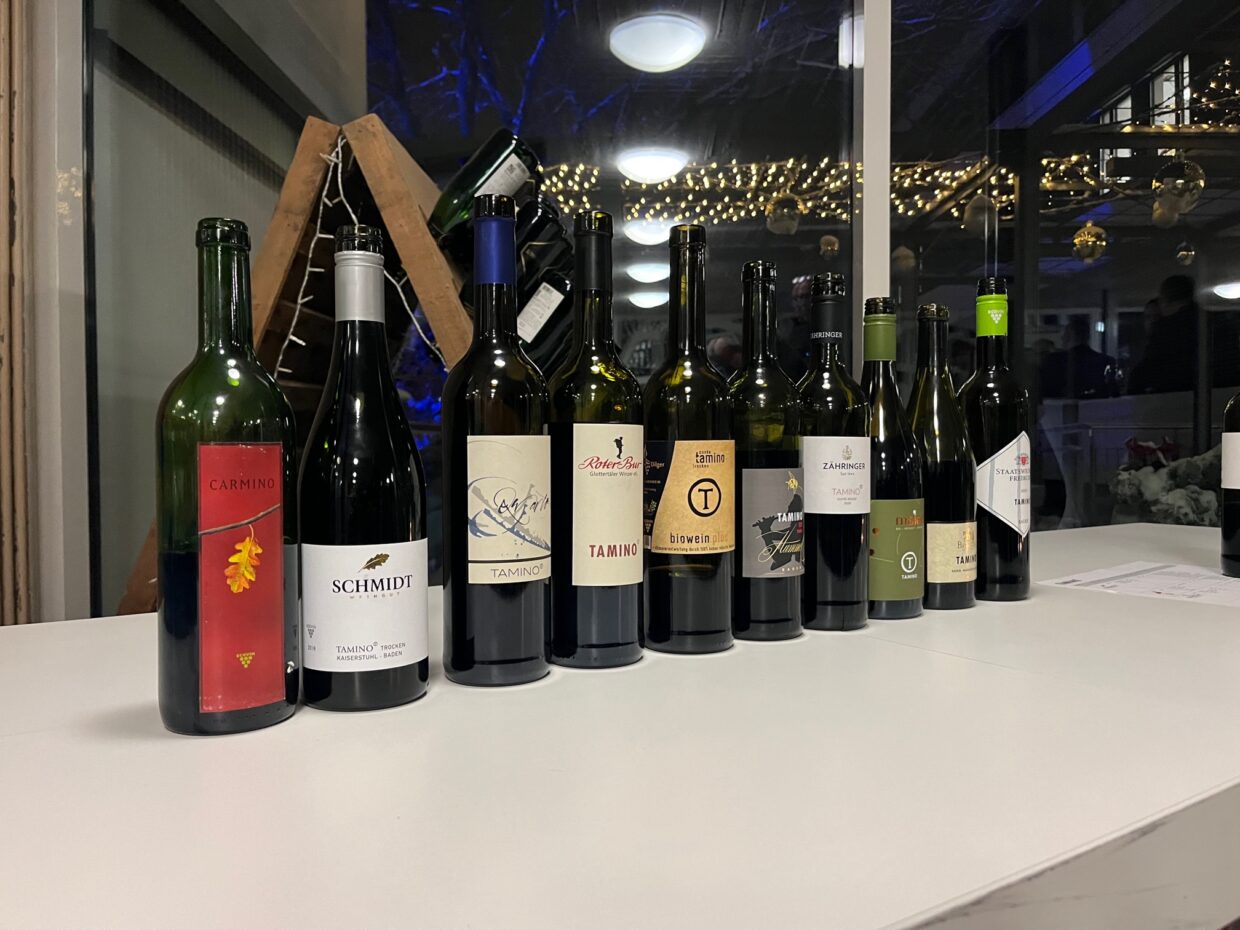With the presentation of the new red wine cuvée “Tamino” made from fungus-resistant grape varieties at the State Viticulture Institute Freiburg (WBI), the wine industry in Baden-Württemberg is breaking new ground. The aim of the project, which was presented on December 12, 2022 with the support of Peter Hauk, Minister of Food, Rural Areas and Consumer Protection in Baden-Württemberg, is to establish wines from resistant grape varieties on the market.
The project is funded as part of the implementation of the “Organic from Baden-Württemberg” action plan and has been running since the beginning of 2021. Ernst Weinmann and Kolja Bitzenhofer from WBI, who are supporting the project in terms of production and marketing, presented the project and its goals together with nine committed producers.
“The large number of red PiWi varieties now grown by winegrowers and cooperatives in the Baden and Württemberg growing regions would make it difficult to publicize the varieties individually and establish them on the market,” argue the initiators of the project. In contrast to the white PiWi varieties, where some names such as Cabernet Blanc, Souvignier Gris, Sauvigniac or Caldaris Blanc have already become more established, it is much more difficult to make varieties known in the red wine sector. The solution is a Community trademark that combines a “coherent and catchy story with a clear wine profile”.
As a solution, the umbrella brand “Tamino” was created, which was selected from a number of suggested names. With the support of Medienagenten, Bad Dürkheim, the brand positioning, the design of design elements and a communication concept were developed.

While producers have a great deal of freedom in their choice of varieties and all red PiWi varieties can be used with a minimum proportion of 85%, the production guidelines and wine profile for the cuvée are strictly formulated: A maximum yield of 80 hl/ha, a minimum of 85 ° Oechsle and more than 12.5 percent alcohol by volume are required. A BSA must be used in the ageing process and at least 50 percent must be stored in barriques, large wooden barrels or stainless steel, and then with chips and micro-oxygenation. Before bottling, 12 months of barrel or tank storage are required. The residual sugar content may not exceed 6 g/l.
In the subsequent tasting, the wines presented by the nine producers present confirmed the wine style aimed for in the production guidelines: dark ruby to purple in color, fruity berry aromas with slightly spicy-vegetable notes, subtle but palatable use of wood, pleasant phenolic structure and a harmonious balance of acidity, tannin and residual sugar.
There are now 30 producers involved in this pioneering project, of which nine producers – Weingut Hummel, Weingut Kuckuckshof, Bio-Weingut Maier, Weingut Andreas Dilger, Winzergenossenschaft Britzingen, Weingut Schmidt, Weingut Zähringer, Staatsweingut Freiburg and Roter Bur Glottertäler – were able to present their wines.

As different as the individual cuvée compositions of the wineries are, all the wines showed a uniform character of dense, fruity, spicy-Mediterranean wine style.
With Tamino, the Baden-Württemberg wine industry is presenting a type of red wine that is more likely to be found in the Romance wine-growing countries and considerably expands the existing German red wine spectrum.
For consumers, Tamino offers an excellent accompaniment to food that promises a long storage period, which is exactly what is needed for optimal presentation, as representatives of the producers such as Martin Schmidt and Andreas Dilger emphasized at the presentation of the wines.